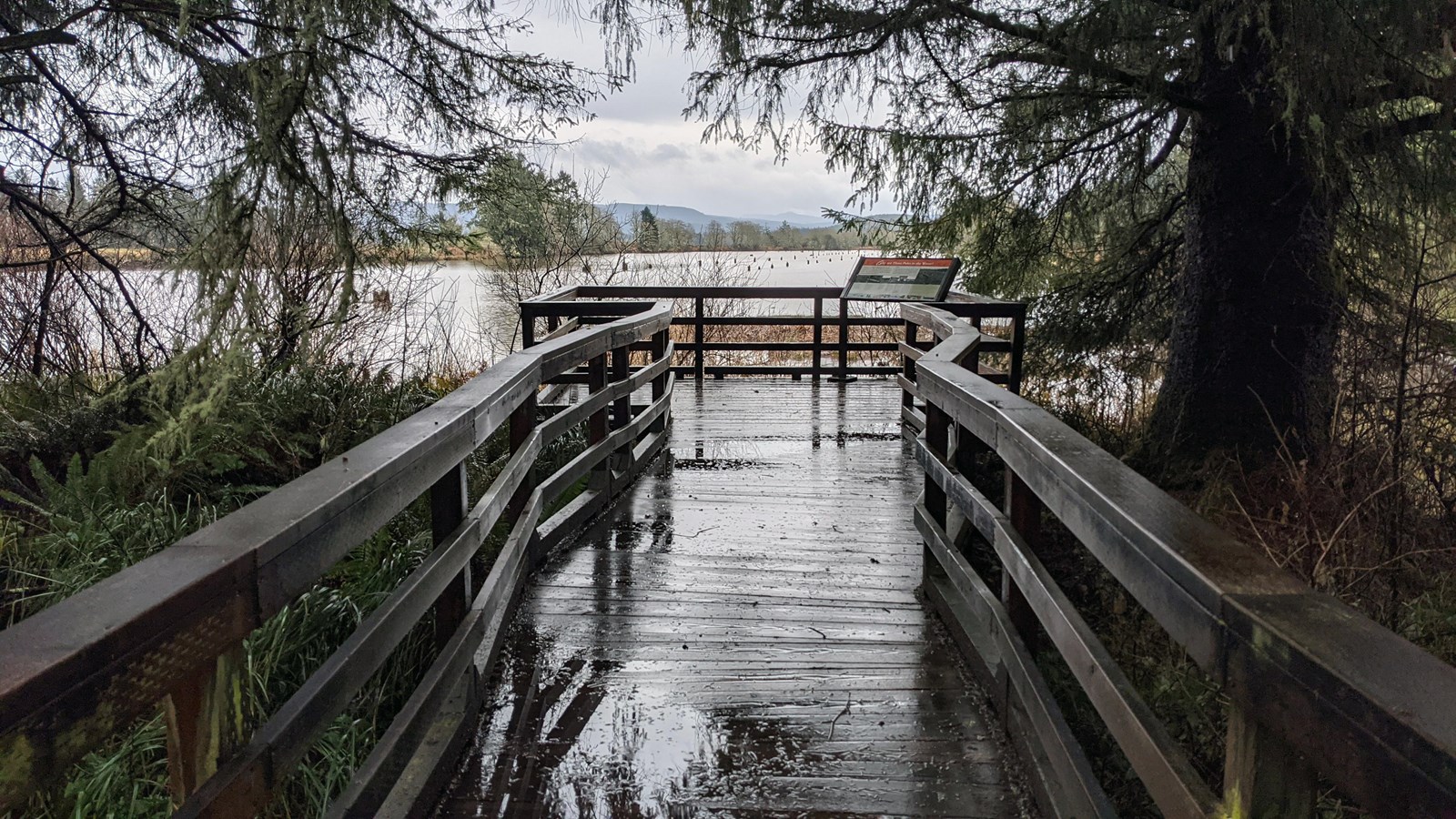Last updated: September 7, 2025
Place
Historical Canoe Landing at Fort Clatsop

NPS Photo
Quick Facts
Amenities
1 listed
Historical/Interpretive Information/Exhibits
Using the rivers to travel had both advantages and disadvantages although usually more of the former. This spot is noted as the landing of the expedition's canoes and where they would set out from in order to check if the high-rising bluff was a suitable site for making their winter encampment.
After creating the Fort the expeditions canoes would be tied to the shoreline, but later had to be moved onto land due to the rising tide and storms damaging them or making them float away.
Ducks, Great Blue Herons, and Bald Eagles are very common place in this location as are many other species of birds for the bird watchers out there. River otters can, although much more rarely, also be seen in the water or on its edge.
After creating the Fort the expeditions canoes would be tied to the shoreline, but later had to be moved onto land due to the rising tide and storms damaging them or making them float away.
Ducks, Great Blue Herons, and Bald Eagles are very common place in this location as are many other species of birds for the bird watchers out there. River otters can, although much more rarely, also be seen in the water or on its edge.
